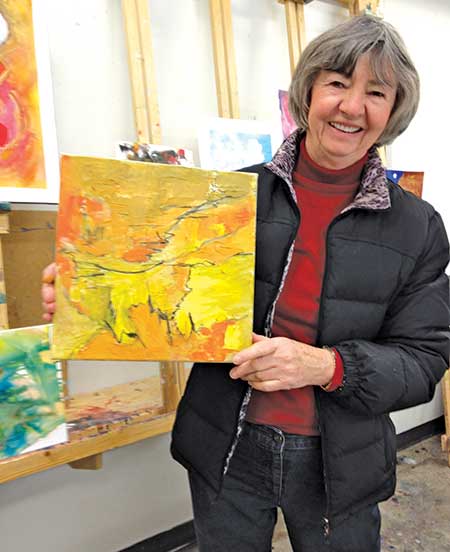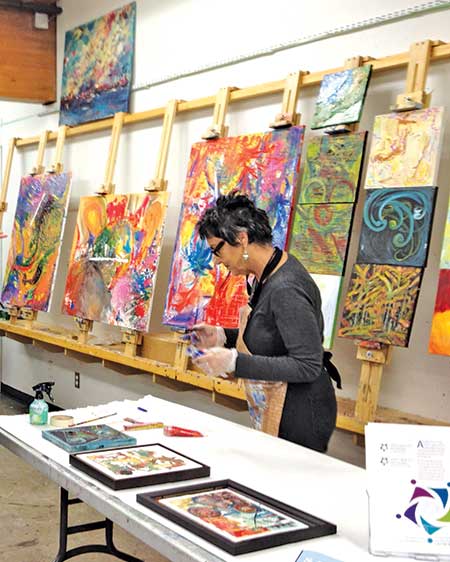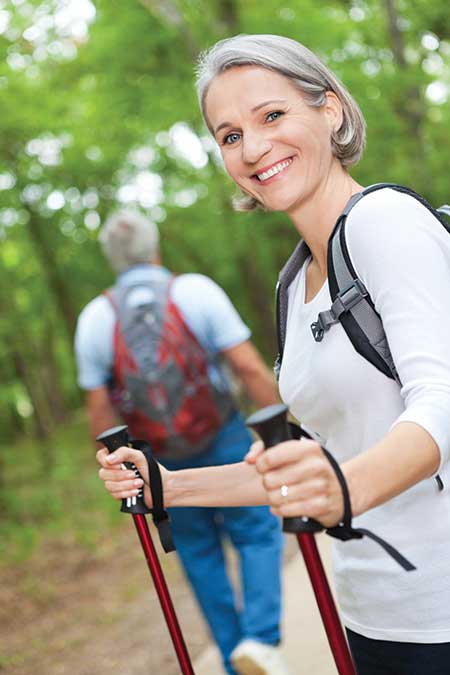Creative expression – Discover the transition from ‘age-ing’ to ‘sage-ing’
Community finds joy and health through creative expression
Art – intuitive, imaginative, creative expression – is the language of the heart. heART Fit is a community group in Kelowna BC. They gather weekly to practice ‘spontaneous process painting’. This is a free-flowing experience of joy and relaxation through playful, creative expression. heART Fit believes that, just as physical energy needs to be exercised, so does creative energy.
Each week an intention is set. Painting begins. Members directed their inner uges and colours are applied — brushed, dripped, or smudged onto a surface. Much is revealed through the hand’s gesture. The challenge is to let the unconscious direct, without judgement, the gestures of the hand. Each participant then takes time to reflect on what appears and how they felt during the act of painting. Paintings are hung and celebrated. Through painting, and sometimes writing poetry, wisdom is shared and members sage rather than age.
What is ‘sage-ing’?
Review your past. Create something out of it. Pass your creation on to the future. Celebrate the richness of your life.
The word is new, but its roots are old. In ancient Greece, sages like Plato and Aristotle were revered for the wisdom of their teachings. Their greatest lesson was to “Know Thyself.” Today, we translate that lesson into the verb ‘sage-ing’. It gives new direction for taking action in the pursuit of personal meaning, health, and well being.
In their book From Age-ing to Sage-ing: A Profound New Vision of Growing Older, authors Zalman Schachter-Shalomi and Ronald S. Miller invite readers to enter the ‘Silver Times’ with enthusiasm, and a passion to share the wisdom of a lifetime. Sage-ing is a vision for aging that focuses on seeking ways to keep growing in consciousness, to feel greater self appreciation, and to serve others. Exploring one’s creative spirit offers us this opportunity. Creativity opens us to our possibilities.

The link between creativity and aging
In a 2002 study, Harvard doctor Gene D. Cohen showed that those who engaged in the arts late in life had fewer illnesses and injuries and more independence.
In 2003, Vancouver doctor Gabor Maté published When The Body Says No: The Cost of Hidden Stress. Says Dr. Maté, “Everyone has the urge to create. Its expression may flow through many channels: through writing, art or music, through the inventiveness of work or in any number of ways unique to all of us, whether it be cooking, gardening or the art of social discourse. The point is to honour the urge. To do so is healing for ourselves and for others; not to do so deadens our bodies and our spirits.”
Mature creativity becomes a fascinating adventure into our capacity to use and enjoy the trained, rational mind, while at the same time reaching out with playful intuition to explore new possibilities. The idea is not to learn new skills, but rather to learn to trust your intuition and relax into playful experimentation.
According to author Mihaly Csikszentmihalyi, current research advises an approach to creativity that is: “a profound absorption into the subject of inquiry, accompanied by self-forgetting, timelessness, and the experience of profound joy.” (CREATIVITY: Flow and the psychology of discovery and invention)

Sharing in Kelowna
As heART Fit grew, participants wanted to share the stories of how their lives have been enriched by creative engagement. Sage-ing With Creative Spirit, Grace and Gratitude is an on-line quarterly journal, produced by senior volunteers. Each draws from the rich resources of their earlier professions. The journal is a gift to the future from those who have discovered sage-ing. It is an open venue for sharing stories of how honouring creative spirit brings joy, and enhances health and well being.
Visit us to discover mature creativity and health through sage-ing. Contribute your story.
About the Author:
Karen Close is an Advisory Council Member of the Arts Health Network. She has spent 30 years as a Visual Arts and English teacher.
Click Here for print PDF file – Mental Health – Creative expression from ageing to sageing
Boost your fitness using walking poles
Walking poles are designed to be used like cross-country ski poles. With each stride, you hold the pole at about a 45-degree angle and plant it to the side and slightly behind your foot. That helps to propel you forward as you push off.
Because of this cross-country skiing technique, walking with poles is often referred to as Nordic walking. Another common term is urban poling.
When walking with poles, your arms, upper body and core muscles are more engaged. That includes your abdominal, pelvic, and back muscles. When people use walking poles, they burn off 20% to 46% more calories. They use about 90% of the body’s muscles.
Using walking poles regularly can build muscle strength and improve posture and balance. This improves your gait and reduces the risk of falls.
Another benefit of walking poles is that they reduce stress on hips, knees, and ankles. They also add stability when you’re out walking on your favourite trails or routes, making it easier to go up and down hills.
Why walking is great for older adults
For most people, walking (with or without poles) is a safe activity helps strengthen bones and maintain healthy joints. Other health benefits may include:
- reduced risk of heart disease, type 2 diabetes, asthma, and certain cancers
- protective effect on brain function and reduced risk of developing dementia
- improvements in mood
- reduced fatigue.
If you have osteoarthritis, use a walker, or have other health conditions, talk to your doctor about developing a regular walking program. Ask if walking poles might work for you. A rehabilitation professional (such as a physiotherapist) can teach you how to use walking poles safely and effectively.
If you are getting your own poles a certified fitness or rehab professional can help you make the right choice.

Making it fun
Many people report that they are able to walk longer and faster when using walking poles. They also report that they are more motivated to stick to a walking program. Making walking a social activity is also a good motivator. Invite a friend along or join a Nordic walking group.
For comfort and safety, wear good walking shoes. Bring water and a healthy snack. Carry a map and cell phone. Then enjoy yourself!
Adapted with permission from https://www.alberta.ca/health.aspx
Click Here for print PDF file -Active Living – Boost your fitness using walking poles

- Categories
Recent Posts

